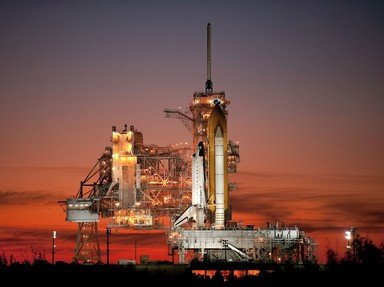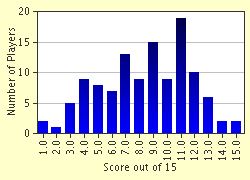Quiz Answer Key and Fun Facts
1. How long after launch are the solid rocket boosters (SRBs) separated?
2. How many general purpose computers (GPCs) are on the shuttle?
3. What stages are there in the external tank (ET)?
4. What is the reaction control system (RCS)?
5. For orbiter tiles, what colour is high-reusable surface insulation?
6. What does the Crewman Optical Alignment Sight (COAS) help with?
7. What is a TDRS or "TEDRISS"?
8. What are the four abort modes for the space shuttle?
9. What is the OMS?
10. Where is the hand controller for the remote manipulator system located?
11. Imagine you suddenly find yourself in the commander's seat of the Shuttle Endeavour. You have just finished the ascent and separated the external tank. Now what?
12. At what speed did the orbiter touch down on the runway?
13. Where is the gaseous oxygen vent arm?
14. What is on the mobile launcher platform that is used for sound surpression system?
15. Let's top it off with an easier one. How many decks are there in the crew module?
Source: Author
astroman_00
This quiz was reviewed by FunTrivia editor
bloomsby before going online.
Any errors found in FunTrivia content are routinely corrected through our feedback system.

